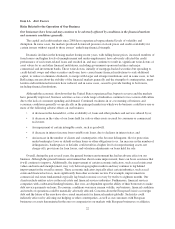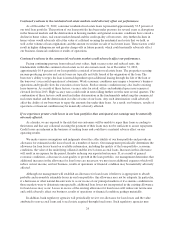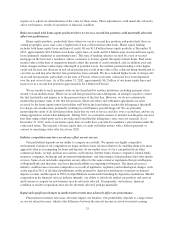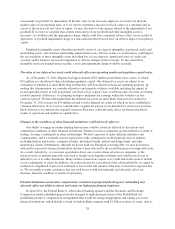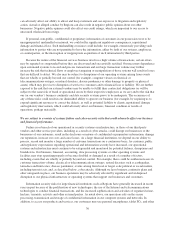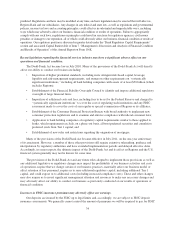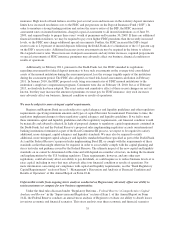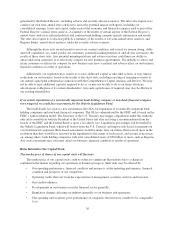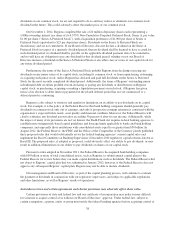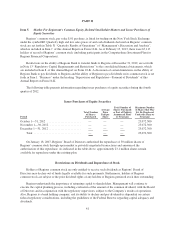Regions Bank 2012 Annual Report Download - page 48
Download and view the complete annual report
Please find page 48 of the 2012 Regions Bank annual report below. You can navigate through the pages in the report by either clicking on the pages listed below, or by using the keyword search tool below to find specific information within the annual report.We are exposed to risk of environmental liability when we take title to property.
In the course of our business, we may foreclose on and take title to real estate. As a result, we could be
subject to environmental liabilities with respect to these properties. We may be held liable to a governmental
entity or to third parties for property damage, personal injury, investigation and clean-up costs incurred by these
parties in connection with environmental contamination or may be required to investigate or clean up hazardous
or toxic substances or chemical releases at a property. The costs associated with investigation or remediation
activities could be substantial. In addition, if we are the owner or former owner of a contaminated site, we may
be subject to common law claims by third parties based on damages and costs resulting from environmental
contamination emanating from the property. If we become subject to significant environmental liabilities, our
business, financial condition or results of operations could be adversely affected.
Our reported financial results depend on management’s selection of accounting methods and certain
assumptions and estimates.
Our accounting policies and assumptions are fundamental to our reported financial condition and results of
operations. Our management must exercise judgment in selecting and applying many of these accounting policies
and methods so they comply with generally accepted accounting principles and reflect management’s judgment
of the most appropriate manner to report our financial condition and results. In some cases, management must
select the accounting policy or method to apply from two or more alternatives, any of which may be reasonable
under the circumstances, yet may result in us reporting materially different results than would have been reported
under a different alternative.
Certain accounting policies are critical to presenting our reported financial condition and results. They
require management to make difficult, subjective or complex judgments about matters that are uncertain.
Materially different amounts could be reported under different conditions or using different assumptions or
estimates. These critical accounting policies include: the allowance for credit losses; fair value measurements;
intangible assets; mortgage servicing rights; and income taxes. Because of the uncertainty of estimates involved
in these matters, we may be required to do one or more of the following: significantly increase the allowance for
credit losses and/or sustain credit losses that are significantly higher than the reserve provided; recognize
significant impairment on our goodwill, other intangible assets or deferred tax asset balances; or significantly
increase our accrued income taxes.
Changes in our accounting policies or in accounting standards could materially affect how we report our
financial results and condition.
From time to time, the Financial Accounting Standards Board (the “FASB”) and SEC change the financial
accounting and reporting standards that govern the preparation of our financial statements. These changes can be
difficult to predict and can materially impact how we record and report our financial condition and results of
operations. In some cases, we could be required to apply a new or revised standard retroactively, resulting in us
restating prior period financial statements. For example, on December 20, 2012, the FASB issued for public
comment a Proposed Accounting Standards Update, Financial Instruments – Credit Losses (Subtopic 825-15),
that would substantially change the accounting for credit losses on loans and other financial assets held by banks,
financial institutions and other organizations. The proposal would remove the existing “probable” threshold in
GAAP for recognizing credit losses and instead require affected reporting companies to reflect their estimate of
credit losses on financial assets over the lifetime of each such asset, broadening the range of information that
must be considered in measuring the allowance for expected credit losses. This proposal, if adopted as proposed,
will likely have a negative impact, potentially material, on Regions’ reported earnings and capital and could also
have an impact on Regions Bank’s lending to the extent that higher reserves are required at the inception of a
loan based on recent loan loss experience.
32


